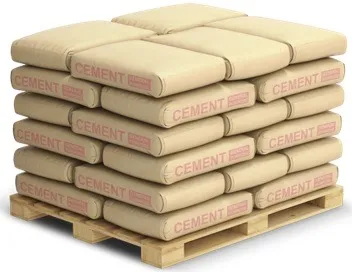Guard Against Humidity and Moisture:
Cement is highly vulnerable to moisture, leading to clumping and solidification. To preserve cement bags on-site, it is vital to shield them from water and dampness. Ensure the bags are housed in a dry, enclosed structure, shielding them from rain, leaks, flooding, and ambient moisture. Moreover, cover stacked cement bags with waterproof sheets or tarpaulin to prevent water seepage.
Prevent direct contact with concrete or wooden Surfaces:
To avert moisture absorption from the ground, refrain from situating cement bags directly on concrete or wood floors. Instead, store them on an elevated surface with an impermeable plastic sheet underneath for additional safeguarding.
Cement Handling and Transportation Guidelines:
When handling cement bags:
Avoid dropping the bags, as this can weaken and damage the packaging.
Before lifting, roll the cement bags over to loosen the cement and reduce the risk of bag splitting.
When carrying individual bags, avoid holding them at the ends. Instead, support the bag from underneath to prevent sagging and splitting, as well as reduce strain on the shoulders and back.
Store cement bags flat with their broad sides down, rather than upright or on their sides.
Protect Cement Bags During Transportation:
- Remove any sharp objects from the vehicle before loading the bags.
- Stack the cement bags in alternate directions, ensuring they are covered with a tarpaulin or waterproof sheet, and securely tied down to prevent movement during transit.
Store cement bags individually:
Avoid storing cement bags with fertilisers or other substances, since contamination might affect the quality and efficacy of the screed.
Ensure Proper Ventilation for Palletized Storage in the Warehouse :
When storing cement bags on pallets in warehouses, make sure there is plenty of ventilation to prevent humidity from building up.
Implement a first-in, first-out rotation for cement bags:
As cement’s potency deteriorates over time, rotate the inventory to ensure viability. Refer to the manufacturer’s date, and use the oldest stock first.
Use Caution When Storing Excess Cement:
Cement leftovers in torn or unsealed bags should be used immediately, preferably re-bagged in plastic or heavy-duty garbage bags with the openings tightly tied with string or tape.
Aggregates:
Aggregates make up approximately 75% of a screed mix and play a critical role in determining the strength and quality of the final concrete. The size, shape, and quality of the aggregates have a considerable impact on the screed’s overall performance. As a result, it is critical to handle and store aggregates with caution to avoid contamination and maintain proper mix design.
Key points to remember:
To prevent overflow and intermingling, avoid stacking aggregates of different sizes together. Mixing different-sized aggregates might throw off the desired mix design, resulting in irregularities in the finished product. Maintaining separation between aggregates of different sizes is critical to producing the proper screed composition.
Covering aggregate piles protects them from external influences like rain and moisture:
To protect aggregate piles from environmental elements like rain and moisture, cover them with plastic sheets or tarps. Exposure to water can change the water content of the mix design, altering the screed’s performance and integrity. By protecting the aggregates, the quality and consistency of the screed can be maintained.
To prevent contamination, store aggregates on clean, hard ground surfaces away from trees and vegetation. Contaminants from nearby locations can degrade the quality of aggregates, resulting in poor concrete characteristics. Selecting optimal storage locations ensures that aggregates are impurity-free, which contributes to the screed’s overall longevity and strength.
SRMPR Best Practices for Cement Storage :
To ensure the quality and integrity of our products, the SRMPR cements warehouse follows the highest standards of best practices for cement storage. Here are some important components of our cement storage techniques.
Controlled atmosphere: To prevent the cement from absorbing moisture, our warehouse maintains a controlled atmosphere with regulated temperature and humidity levels. This helps to keep the cement fresh and prevents clumping or hardening.
Proper Ventilation: The warehouse has adequate ventilation to allow for air circulation and prevent humidity buildup. This helps to maintain ideal conditions for cement storage and minimises condensation, which can lead to moisture absorption.
Increased Storage: Cement bags are stored on raised pallets or racks to keep them off the ground and reduce the possibility of moisture absorption through the floor. This also improves airflow around the bags, lowering the likelihood of condensation development.
Product segregation: Different types of cement are stored separately to avoid cross-contamination and maintain product purity. This segregation contributes to the quality and consistency of each cement type.
Regular Inspections: Our warehouse is inspected regularly for evidence of moisture intrusion, packing damage, or other concerns that could jeopardise the quality of the cement kept there. To guarantee product integrity, any faults that arise are swiftly rectified.
Quality control methods: Throughout the storage process, strict quality control methods are undertaken to ensure that only the best quality cement is delivered to clients. This includes conducting frequent tests on stored cement samples to ensure conformity with industry requirements.
Conclusion:
SRMPR cements warehouse adheres to these best practices for cement storage to ensure that our customers receive cement products of the highest quality, consistency, and performance.



